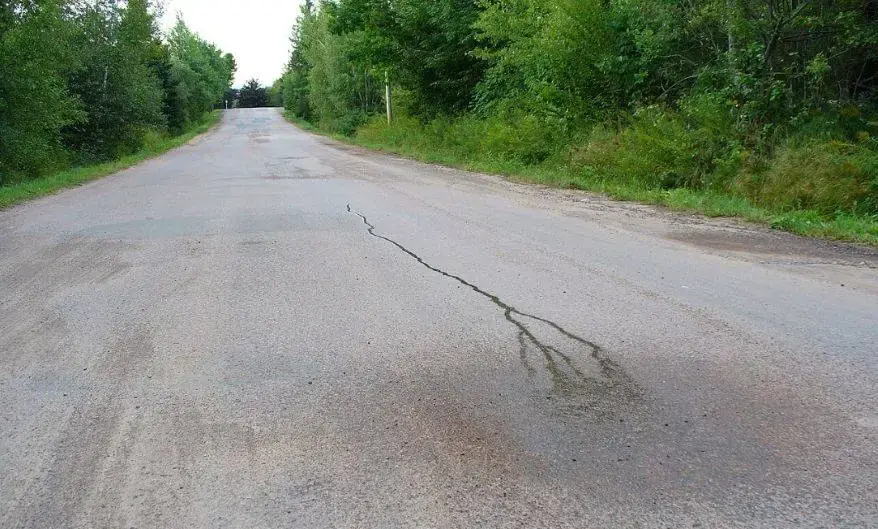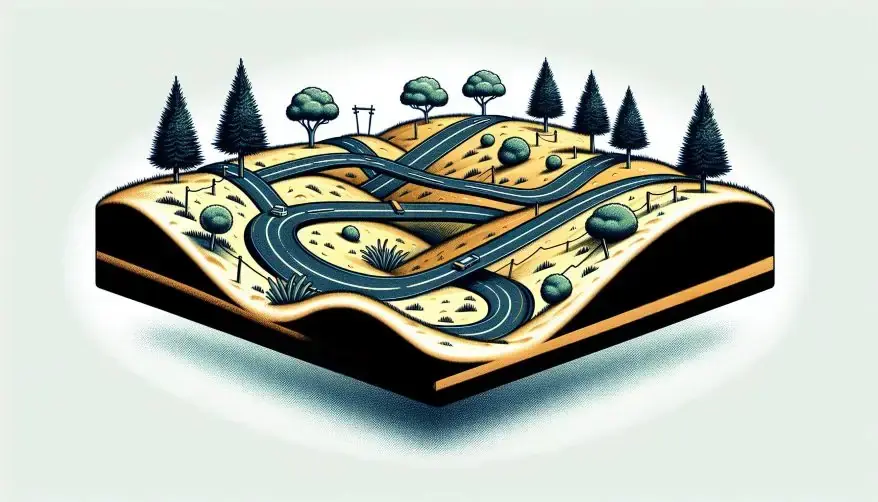The Mystery of Gravity Hills: Optical Illusions Explained
Gravity Hills, standing as curiosities of nature, deliver a spectacle that baffles and amazes those who encounter them. These mysterious sites, scattered like rare gems across the globe, challenge our fundamental understanding of gravity and perception. As vehicles appear to defy the laws of physics, ascending slopes on their own when left in neutral gear, one might ask, “How do these phenomena occur?” As proponents of science like Luigi Garlaschelli assert, the truth is rooted not in supernatural forces but in fascinating optical illusions. Moreover, Garlaschelli’s research reveals that these gravity hills result from visual misperceptions caused by the surrounding landscape and the observer’s viewpoint.

What Is a Gravity Hill?
A Gravity Hill, also referred to as an anti-gravity hill or magnetic hill, is characterized by an unusual visual phenomenon where cars left in neutral seem to move uphill, working against what we perceive as gravitational pull. Moreover, it’s not ordinary magic nor physics turned on its head; rather, these locations play tricks on our minds, creating a convincing illusion of defying gravity.
A Phenomenon of Perception
Understanding Gravity Hills starts with acknowledging how human perception assesses elevation and slopes. Our eyes translate the environment around us in ways that don’t always perfectly align with reality. Thus, this trickery happens because of the surrounding landscape contours, background settings, and the observer’s angle of vision. Part of the allure comes from the alignment between human senses and environmental cues, like the horizon line, that often lead us astray. In simpler terms, areas around the world where these Gravity Hills exist have such a configuration of natural slopes and horizons that they deceive our senses.
Where Science Meets Illusion
Antigravity Hills are fascinating examples of how a distorted perception of space can lead to incorrect interpretations of reality. Detailed studies, such as those conducted by Bressan, Garlaschelli, and Barracano, have uncovered the secrets behind these deceptive slopes. Their research underscores that these Gravity Hills are molded by perceptual illusions, largely influenced by deceptively flat terrain and strategic backgrounds. Further, at the heart of this anomaly is the disconnection between what we see and what is truly there—the key to the mystery is an illusion, revealed when objective tools like spirit levels attest to a downward incline that seems to lie upward.
The Science Behind Gravity Hills
Behind every mysterious Gravity Hill lies a complex intersection of perceptual hypothesis, environmental stimuli, and cognitive psychology. Thus, these places offer an invitation to explore the fascinating work of the human mind.
Illusions in Nature
To appreciate these optical illusions, we must first explore the inherent nature of human perception. Our cognitive systems are vessels of past experiences and contextual assumptions that shape how we see the world. It’s a dance between light, shadows, and angles. Therefore, gravity hills flourish on this delicate balance, harnessing natural inclines that do not play by the rules we expect from gravity.
The Role of Contextual Inclines and False Horizons
Two principal contributors reign supreme in the creation of Gravity Hills: contextual inclines and false horizons. Contextual inclines involve surrounding roads or slopes subtly slanting downward more sharply than the central road. Thus, this creates a perception of an uphill struggle even though the car is rolling downhill. False horizons further exacerbate this illusion by adjusting the observer’s viewpoint, crafting an environment where the expected visual cues are missing, and misleading one’s concept of horizontal alignment. The mystery is an amalgam of angles that compel our eyes into misjudging slopes—a scientific marvel of visual trickery. Therefore, these elements can build such a compelling narrative in the viewer’s mind that breaking the spell to see the truth is anything but easy.

Notable Gravity Hills Around the World
From the heartlands of America to the mesmerizing landscapes of Italy, Gravity Hills presents a global appeal, stretching beyond borders and cultures. Some of the most famous Gravity Hills are:
- In India, one can visit the famous Magnetic Hill near Leh in Ladakh. The Magnetic Hill near Leh is another testament to the captivating power of optical illusions, drawing visitors eager to experience this peculiar phenomenon.
- In the United States, one of the most famous is located near Prosser, Washington. This particular hill is known for its mysterious ability to make cars appear to roll uphill when placed in neutral. Moreover, the phenomenon at Prosser is attributed to an optical illusion created by the surrounding landscape and a false horizon, as explained by Luigi Garlaschelli in his research on gravity hills.
- Other notable gravity hills in Canada, such as Magnetic Hill in Moncton, New Brunswick. Magnetic Hill in Moncton is renowned for its ability to bewilder visitors with the same uphill-rolling illusion.
- In the United Kingdom, a well-known gravity hill is located in the village of Ayrshire, Scotland. Thus, this hill, like others worldwide, captivates visitors with its seemingly gravity-defying properties.
Famous Site and Their Story
Bedford County’s Gravity Hill in Pennsylvania is a popular spot for tourists who want to experience this phenomenon firsthand. According to Michael A. Frizzell’s observations, even though some may believe in these strange forces, science offers a simpler solution: it’s often just an optical illusion.
In March 2004, investigators conducted tests at Bedford County Gravity Hill to understand its mysterious reputation better. They collected data using GPS devices and laser levels to measure elevation along the road. The results showed a clear decline that defied many visitors’ visual expectations. Thus, this scientifically-backed explanation leaves us with more questions than answers.
Hence, while this specific location does not exhibit any true gravitational anomalies however fascinating it may appear; it highlights our perception limits set by illusions around us.
The story behind how Bedford County Gravity Hill came into consciousness sounds just as intriguing as the hill itself! Charlie Gumppet, a postman after World War II, was the first to notice this odd occurrence when his truck rolled uphill seemingly on its own. Soon after sharing this wonder through radio broadcasts and personal stories—this site gained fame and began attracting visitors from all around.
Experiencing the Illusion: What to Expect
Embarking on a journey to experience Gravity Hill brings more than just visual amusement; it provides an engagement with one’s senses. Expect an adventure where perception takes center stage. With the immediate sensory cues subverting logic, observers find themselves entranced by a world where moving uphill seems like a reality. Further, rolling forward and surrendering to the power of the illusion is an exhilarating experience, where exact reality hides behind nature’s curtain.
Debunking the Myths
Gravity Hills might seem unexplained or even supernatural to the casual observer, but science offers clear insights into their workings, unpacking the mystery without stripping away the wonder.
Gravity Hills: Common Misconceptions
The myths surrounding Gravity Hills often credit aliens, magnetic forces, or sacred geometrical alignments with their peculiar miracles. Paranormal enthusiasts even suggest that these sites are hotspots of unexplained or supernatural energies. However, from a scientific perspective, these interpretations lack a factual foundation. Moreover, misconceptions perpetuate because they offer narratives as compelling as the experience. Knowing the science behind them doesn’t dampen their allure; it lets observers marvel at nature’s capacity to deceive the eye with ordinary tricks.
The Paranormal and Scientific Perspectives
Moving past folklore, scientific inquiry sheds a nuanced light on the forces at play. Scientists like Luigi Garlaschelli dedicate their careers to unraveling the reality lurking beneath the spectacular facades. Despite captivating myths, physics and perception explain these phenomena, revealing the fascinating science behind illusions.

Creating an Illusion: A Laboratory Exploration
Gravity Hills’ wonders go beyond nature, as lab models provide insights that sharpen our perception.
The Tabletop Model Experiment
Employing creativity and precision, Garlaschelli and his team recreated the essence of Gravity Hills using meticulously designed tabletop models. Therefore, these setups, involving slanted boards and models of landscape, replicated the real-world Gravity Hill scenarios within the confines of the lab. The models replicate reality with slopes and horizons, letting observers experience how visual cues create illusions.
Discoveries and Insights
The insights gained from these explorations are nothing short of illuminating. The experiments confirm that Gravity Hills deceive by redirecting known visual cues into alternate realities. The dioramas underscore our susceptibility to optical tricks and our tendency to trust what we see over what tools might objectively measure. Certainly, discovering the illusions generated in these experiments opens doors to understanding human vision better and affirms that belief in the impossible can sprout even from grounded science.
Similar Optical Illusions in Nature
Venturing into the realm of optical illusions, we find that Gravity Hills are not alone. Other phenomena challenge our perceptions.
The Moon Illusion: A Natural Comparison
The Moon Illusion offers another glimpse into this perplexing world of visual deceptions where the moon appears larger on the horizon than when it climbs high in the sky. This illusion, like Gravity Hills, results from contrasting spatial references and environmental context that trick our brains into reinterpreting size perception. Moreover, recognizing the parallel between these illusions not only anchors their validity but highlights how natural occurrences paint intriguing canvases of curious observation.
Visual Deception and Our Environment
Visual deception in nature often stems from our reliance on contextual information and how evolution has attuned our senses to interpret environments based on utility rather than objective truth. Thus, this susceptibility is central to comprehending natural phenomena like Gravity Hills. By studying these illusions, we embrace the opportunity to delve deeper into the intricate dance between perception, cognitive processes, and contextual visual information carved intricately by nature.

Conclusion
Gravity Hills are where reality intertwines with perception, sketching a seamless tapestry woven with mystery, science, and intrigue. These globally unique locations are a reminder of the powerful illusions that nature can paint when viewed through the prism of the human eye. Further, understanding their roots in optical illusions does not diminish the charm. Instead, it enhances our appreciation for the universe’s nuances and the beauty hidden within perceived reality. The study of these sites leaves us with awe, reminding us of the manifold ways Earth challenges and captivates, whispering hidden truths to unlock with every exploration.
References
- Bressan, P., Garlaschelli, L., & Barracano, M. (2003). Antigravity Hills are Visual Illusions. Psychological Science, 14(5), 441–449. https://doi.org/10.1111/1467-9280.02451
- Hersey, J. B. (1944). Gravity investigation of central-eastern Pennsylvania. Geological Society of America Bulletin, 55(4), 417–444. https://doi.org/10.1130/gsab-55-417
- Gregory, R. L. (1997). Knowledge in perception and illusion. Philosophical Transactions of the Royal Society B Biological Sciences, 352(1358), 1121–1127. https://doi.org/10.1098/rstb.1997.0095
- Eagleman, D. M. (2001). Visual illusions and neurobiology. Nature Reviews. Neuroscience, 2(12), 920–926. https://doi.org/10.1038/35104092
- Sugihara, K. (2017). Antigravity slopes. In Oxford University Press eBooks (pp. 295–297). https://doi.org/10.1093/acprof:oso/9780199794607.003.0033
Additionally, to stay updated with the latest developments in STEM research, visit ENTECH Online. Basically, this is our digital magazine for science, technology, engineering, and mathematics. Further, at ENTECH Online, you’ll find a wealth of information.






